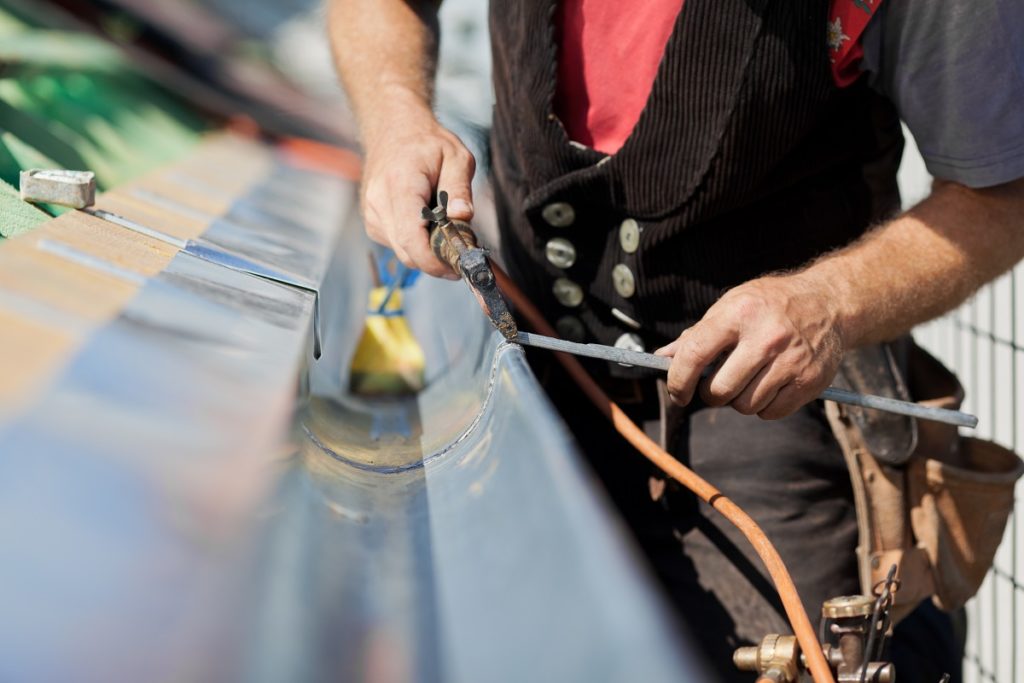A good chunk of regions in the United States gets battered by hailstorms throughout most of the year. Usually, states like Texas are hit the hardest with this phenomenon, but it can still affect other states like Utah and much of the inter-mountain states. In two years, the country has experienced over 2.8 million incidents of hailstorms, which have caused billions worth of structural damage to residential and commercial areas.
Not only are hailstorms devastating to structures, vehicles, and furniture, it can also cause serious injuries to individuals that stay outside. Therefore, it’s only appropriate that we prepare our roofs and our home from hailstorms, damage from debris, and storm damage.
When it comes to most roofing materials, your typical 3-tab shingles, wooden shakes, and slate tiles are designed to last long against rain and strong winds. Still, it doesn’t necessarily have the strength to endure the high-energy kinetic impacts of hailstorms. If this is the case, then you and your home might still be vulnerable hailstorms.
What’s a suitable solution in mitigating damage to your home from falling hazards and debris? Impact-resistant roofing materials can help against these types of weather conditions. Not only can these materials protect your home from hailstorms, but are also versatile against flying debris and strong winds.
Impact Resistance
There are four classes of roofing that you will need to consider when weighing in on impact resistance.
- Class 1 — Normally, most roofing materials will be in this range. It can only withstand around 3.53 pounds per foot. Most roofers are advised to tread carefully on roofs with materials in this class.
- Class 2 — Not necessarily the best, but not bad. It can withstand 7.35 pounds per feet, which makes it good areas that don’t necessarily get hailstorms but still get a proper amount of debris from foliage.
- Class 3 — Mid-tier materials can hold its ground against hailstorms. That can withstand kinetic energy of around 13.56 pounds per foot.
- Class 4 — Class 4 materials are the strongest in the group. They might be a bit more expensive, but they can absorb 23.71 pounds per foot.
You might be able to find class 4 metal roofing and shingles, but they tend to be 20% more expensive than any other material. It might seem like more of an investment, but if you’re living in an area that’s usually battered by hailstorms, this is an essential improvement for your home. It’s better to pay for the extra price rather than having to spend thousands of dollars worth of damages.
If ever you plan on having a new set of roofing that’s tailored towards hailstorms and debris, here are some factors that you might need to consider:

The Thicker, The Better
Naturally, the thicker the material, the harder it is for hail and other debris to puncture it. Most metal manufacturers that make corrugated and standing seam metal roofing will usually focus on the aesthetic appeal and longevity of the product, but it’s always important to gauge the thickness. Most experts will suggest a 26-gauge steel roofing panel since these are what’s used in large-scale hail storms. The more durable seams that are in between panels can prevent any sort of puncture s and damage from hail.
If you’re not sure about the class of your materials, some metal manufacturers also provide durable custom metal fabrication that can withstand the natural elements. With the use of state-of-the-art laser cutters, the precision and quality of these fabricators will ensure that your materials will be kept in peak condition.
Tensile
Aside from the thickness of the material, we also have to consider the innate strength of the material. Most metal panels will have good tensile strength, but others get brittle when the temperature fluctuates, which can make it brittle. The higher the tensile strength, the higher the resistance against impacts, dents, and superficial damages. In most cases, roofing with low tensile strength will bulge and warp if exposed to high pressures.
While there’s no way of avoiding dents, scratches, and surface damage to your roof, tensile strength is an excellent way of mitigating damage and lessening the likelihood of punctures.
There are certainly more factors that you have to weigh in on when choosing the right material for your roof, but impact resistance should never be overlooked when planning for your home. For most homes that are situated in hailstorm-prone areas, getting a class 4 roof can ensure the protection of your property and loved ones from damage and injuries.
Sure, it might be an added cost, but it’s way better than having to pay more for reparations.
